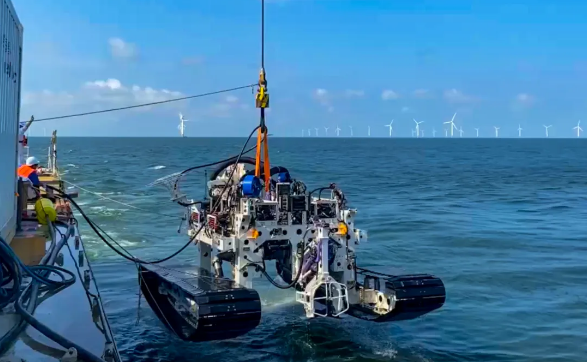Nansha made breakthrough in deep-sea operations
Recently, the first self-propelled subsea cable installation robot developed by Nansha Technology Company, Sealien (Guangzhou) Technology Company, completed its first offshore wind power cable burial operation in the Xuweng Sea area of Zhanjiang city. The success of this operation marks an advancement in China's large-scale intelligent subsea operation equipment and capabilities.

First self-propelled subsea cable installation robot "Taurus". [Photo/WeChat account: gz_nanshafabu]
Named "Taurus", this subsea cable installation robot is the first domestically developed, fully autonomous, nationally produced subsea cable installation robot and holds the distinction of being the highest-powered of its kind in Asia. This development signifies a breakthrough in key technologies for domestic deep-sea operation equipment, substantially enhancing China's deep-sea operation capabilities. The robot's efficient cable burial speeds and versatile operational capabilities provide strong support for subsea operations.
Operating in a self-propelled track mode, the robot boasts a power exceeding 1,600 horsepower, demonstrating efficient subsea pipeline laying capabilities. It integrates multiple core technologies, excelling not only in subsea pipeline laying but also providing solid technical support for the development of high-end deep-sea equipment like deep-sea working robots and subsea mining robots.
The "Nansha Plan" advocates for the establishment of a strategic platform rooted in the Guangdong-Hong Kong-Macao Greater Bay Area and oriented towards the world. As Guangzhou's sole gateway to the sea, Nansha is developing its maritime economy, leveraging its port advantages in the development of the Greater Bay Area.
All rights reserved. Presented by China Daily









